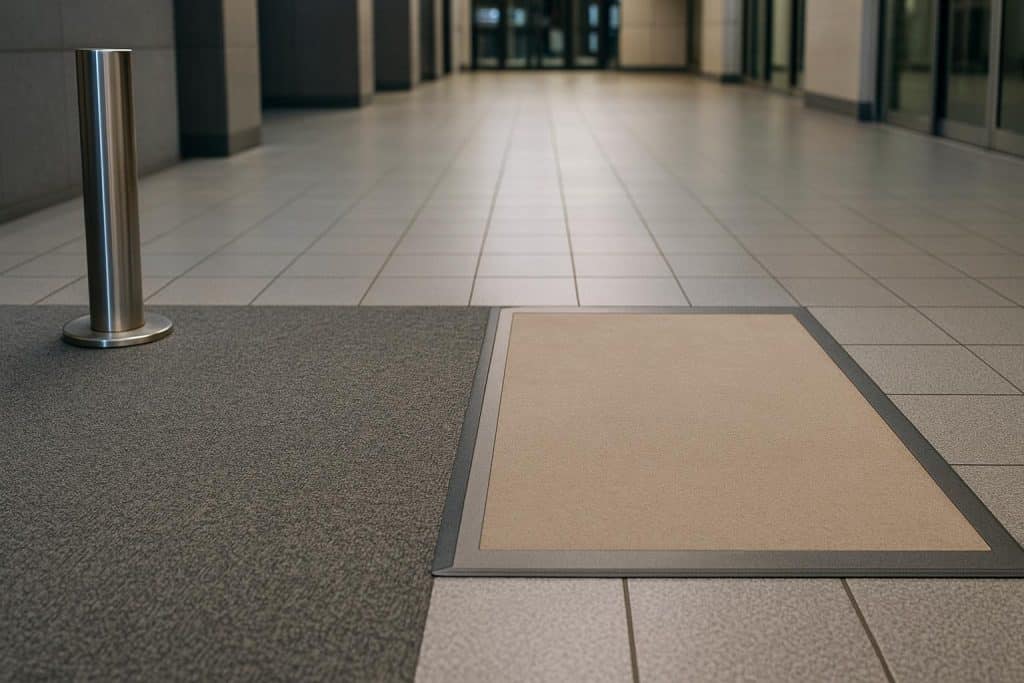Floors take a lot of abuse, especially in high-traffic areas like entryways, hallways, offices, and retail spaces. Over time, constant foot traffic can lead to scratches, fading, and premature wear that dulls even the most beautiful surfaces. Protecting your floors isn’t just about preserving their appearance—it’s about extending their lifespan and reducing costly maintenance. Fortunately, a few thoughtful steps, from proper materials to clever accessories like velcro sticky dots, can make all the difference in keeping floors looking fresh and polished year after year.
Start with the Right Foundation
The first step in protecting any floor begins before it’s even installed: choosing the right material. Not all flooring types are designed to withstand the same level of stress. For example, hardwood floors offer timeless beauty but can scratch easily in busy zones, while luxury vinyl plank and ceramic tile hold up far better to daily wear.
For businesses or public spaces, consider commercial-grade materials specifically engineered for durability. These products often include protective surface layers that resist scuffs, stains, and moisture. In homes, areas such as kitchens, mudrooms, and hallways benefit from flooring options that combine toughness with easy cleaning—think stone, laminate, or sealed concrete.
Add a Protective Layer
Even the strongest flooring benefits from an additional layer of protection. Applying a high-quality sealant, finish, or protective coating can shield the surface from abrasion and spills. For wood floors, polyurethane finishes or wax coatings can add a durable barrier that prevents minor damage. Tile floors can benefit from periodic resealing of grout lines to block moisture and stains.
For extra traction and protection, anti-slip floor coatings are also available. These are especially helpful in environments that deal with water or debris, like entryways or restaurant kitchens. The Occupational Safety and Health Administration (OSHA) recommends maintaining slip-resistant surfaces to reduce workplace injuries while protecting floor integrity.
Use Rugs and Mats Strategically
One of the simplest and most effective ways to prevent floor damage is through rugs and mats. These act as buffers between foot traffic and the flooring surface, catching dirt, sand, and water that can otherwise scratch or stain. Place mats both outside and inside entry doors, as well as in hallways or at the base of stairs where traffic is concentrated.
To prevent mats from shifting, use rug grippers or attach them with removable adhesives. These provide secure, non-slip placement without leaving residue or damaging floors. In commercial spaces, large walk-off mats can trap dirt before it spreads throughout the building, significantly reducing cleaning frequency and wear.
Clean Regularly and Gently
Routine cleaning is the backbone of floor protection. Dirt and grit act like sandpaper when ground underfoot, dulling finishes and wearing down materials. Daily sweeping or vacuuming prevents buildup, while periodic mopping removes oils and residue that can damage protective coatings.
When cleaning, choose products appropriate for your floor type. Harsh chemicals can strip finishes or discolor certain materials. Instead, opt for pH-neutral cleaners and avoid excess water, which can seep into seams or cracks. Regular maintenance doesn’t just preserve aesthetics—it also prevents structural deterioration that can lead to expensive repairs later.
Furniture Pads and Floor Protectors
Furniture can be one of the biggest culprits in damaging floors. Chairs, tables, and heavy appliances can scratch or dent surfaces when moved. Adding felt pads or rubber protectors to furniture legs is a simple, inexpensive way to prevent this. For larger pieces that are frequently repositioned, industrial-strength Velcro strips offer a more secure and adjustable solution.
It’s also smart to check and replace these pads periodically. Over time, dirt can accumulate on their surfaces, turning them from protectors into potential abrasives.
Control the Environment
Environmental factors play a larger role in floor health than most people realize. Humidity, sunlight, and temperature fluctuations can all affect certain flooring materials. Hardwood, for example, expands in humidity and contracts in dry conditions, which can lead to warping or gaps. Using a humidifier in winter and a dehumidifier in summer can help maintain balance.
Sunlight is another silent floor killer. Overexposure to UV rays can cause fading and discoloration. Closing blinds during peak sunlight hours or applying UV-protective window film helps preserve your floor’s natural color and finish. The National Wood Flooring Association (NWFA) recommends maintaining consistent indoor conditions year-round to protect wood floors from seasonal damage.
Preventive Maintenance Pays Off
The beauty of a well-maintained floor lies in the details. A small amount of care can prevent years of premature aging. Establishing a maintenance routine—vacuuming, periodic resealing, repositioning rugs, and monitoring environmental conditions—ensures long-term durability and beauty.
In high-traffic zones, prevention is always cheaper and easier than repair. Simple measures like properly placed mats, protective coatings, and cleaning schedules extend the life of your floors while maintaining a welcoming, professional appearance.
The Long-Term Benefit of Protection
Protecting your floors isn’t just about keeping them clean; it’s about preserving value. Well-cared-for floors improve the look and feel of a space while saving money on replacements and refinishing. In commercial settings, they contribute to a safer and more pleasant environment for both employees and customers.
By combining durable materials, smart design choices, and consistent maintenance, you can ensure your floors remain strong, beautiful, and resilient—even in the busiest areas. With the right approach, those high-traffic zones don’t have to look worn out—they can shine for years to come.
